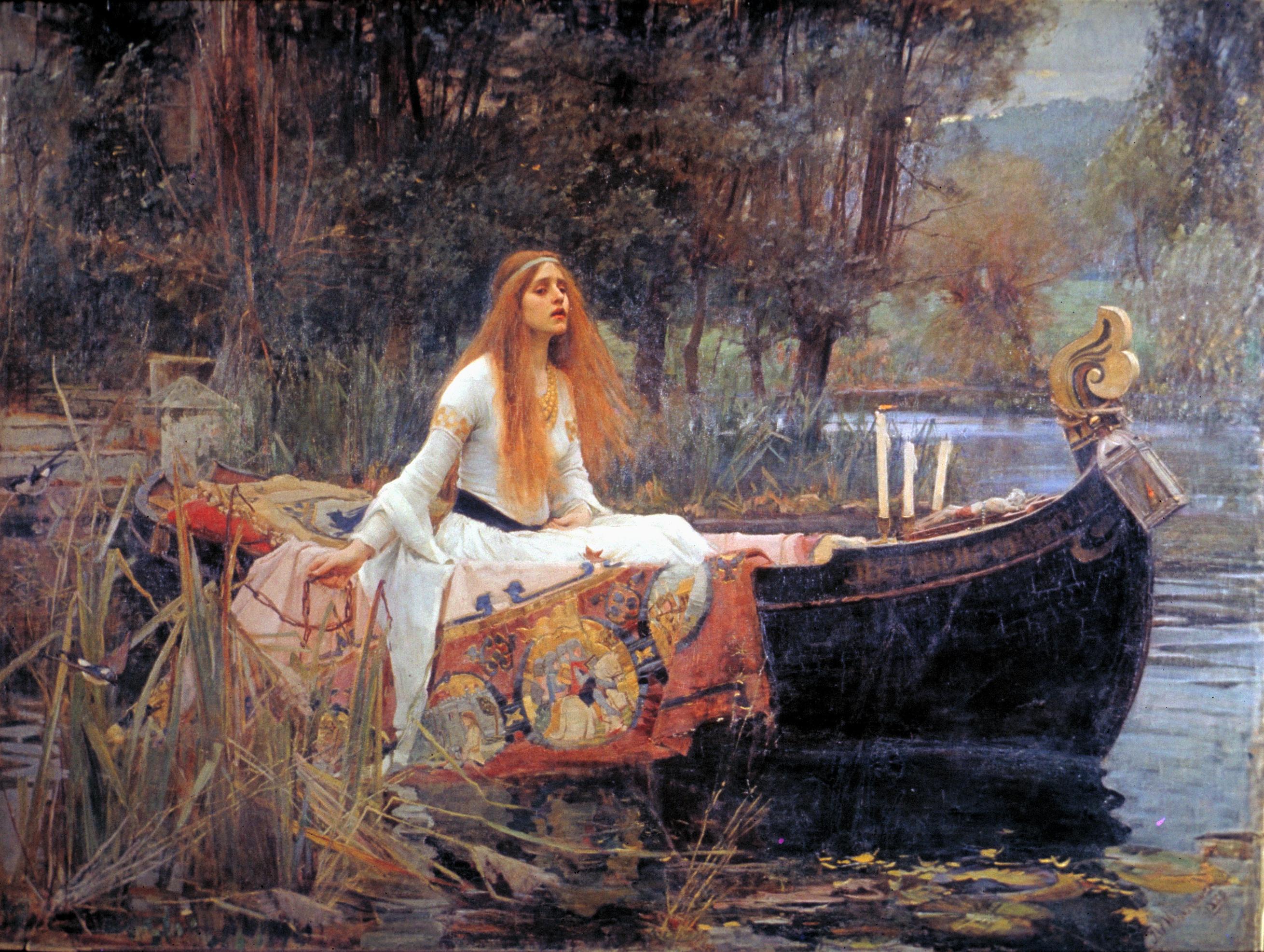**Lots of text and images here, some written by me, some from various websites (all text from websites will be quoted with links to site), written at different times so may be quite repetitive at some points! But this is all about Elizabeth Siddal.**
Elizabeth Siddal; July 25th 1829 - February 11th 1862

"While working in a millinery shop, Lizzie was discovered by the artist Walter Deverell who painted her as Viola in his depiction of Shakespeare’s Twelfth Night. Lizzie went on to model for other Pre-Raphaelite artists and is most commonly recognized as Ophelia in the painting by John Everett Millais. It was the charismatic Dante Gabriel Rossetti who not only drew and painted her obsessively, but encouraged Lizzie in her own artwork and poetry. Their relationship was intense and rocky, with an informal engagement that lasted on and off for a decade. Sadly, their marriage was short. The couple suffered a stillborn daughter and Lizzie was seriously addicted to Laudanum. She died in 1862 due to an overdose. The rest of Lizzie’s tale is famous for its macabre nature: in his grief Gabriel buried his only manuscript of his poems with Lizzie. The poems, nestled in her coffin next her famous copper hair, haunted him. Seven years later, he had her coffin exhumed in order to retrieve the poems for publication. The story was spread that Lizzie was still in beautiful, pristine condition and that her flaming hair had continued to grow after death, filling the coffin. This, of course, is a biological impossibility. Cellular growth does not occur after death, but the tale has added to Lizzie’s legend and continues to capture the interest of Pre-Raphaelite and Lizzie Siddal enthusiasts.
The story of Lizzie’s life is punctuated with dramatic episodes — falling ill as a result of modelling as Ophelia, the tales of Gabriel’s dalliances and her grief at the loss of their stillborn daughter. Our modern society is more aware than the Victorians regarding mental health issues. Unfortunately for Elizabeth Siddal, she lived in a time where addiction was a taboo subject and little was known about post-partum depression. Lizzie lived within a cycle of illness, addiction and grief with no resources available to her. Although she did have a creative outlet while most women were denied modes of self expression, Lizzie was never able to move beyond the addiction that claimed her life."
"Elizabeth Siddal has become so associated with the character of Ophelia that perhaps we now treat her as if she is Ophelia. It is hard not to draw parallels: the golden Pre-Raphaelite Stunner falling prey to illness as she becomes Ophelia. Ophelia loses her father, Lizzie her stillborn child. Ophelia, overwhelmed with grief and madness, sings strange songs while those around her seem unsure of what to do. Lizzie rocks an empty cradle, urging others to be quiet so as not to wake the baby that is not there. Ophelia drowns, Lizzie overdoses. Finally, Hamlet leaps into Ophelia’s grave. Rossetti exhumes Lizzie’s grave.
It’s all so deliciously Shakespearean."
Elizabeth Siddal:
- Model for Pre-Raphaelite Brotherhood.
- She was the model for Ophelia.
- She was ginger which, at the time, was still associated with Witchcraft.
- Often, the only women who would model for artists were prostitutes, which meant Lizzie was seen in this degrading way also.
- The Pre-Raphaelites painted very true to their models, rather than who the painting was meant to be depicting, meaning the work resembles Lizzie in a very true representation.
 |
| The Lady of Shalott by John William Waterhouse |
-The Pre-Raphaelites emphasized lips and hair
-Lizzie Siddal was the main model for the Pre-R's
-Lots of hidden meanings in the work, for example below is an innocent looking painting, which has much deeper meaning when looked at in detail...
At first glance it looks like a couple are being playful in their house, but upon closer inspection, the woman doesn't have a wedding ring on, she's half dressed, there's the man's glove on the floor, all of these things point to her being nothing more than a mistress. The fact that there's a mirror in the background, reflecting the painting and showing the outside suggests the woman's redemption is possible, and the fact that the viewer would be stood where the mirror is reflecting suggests that you could possibly reflect aspects of your own life on the painting, or that you could be her salvation, OR even that you feel like you are part of the painting and therefore feel involved.
http://www.tate.org.uk/learn/online-resources/glossary/p/pre-raphaelite




No comments:
Post a Comment